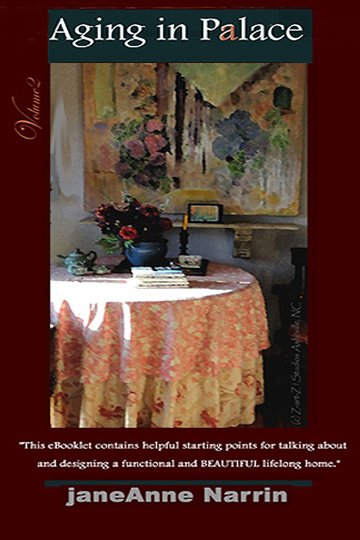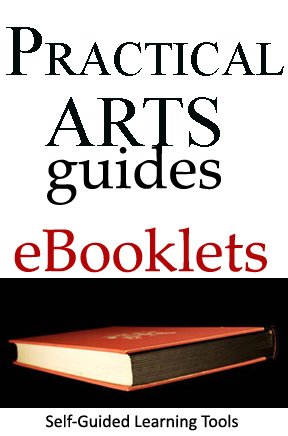AMBROSIUS
at the creative edge of time
T H E B O O M E R E F F E C T S E R I E S


AMBROSIUS
"We all need to put our own minds to work on rethinking our own aging and view life’s second half as a time of renewal and meaning rather than a time to retreat from purposeful living... ."
As the Director of Business Development at Red String, LLC. an organization that provides social media with a purpose and a passionate team from different educational backgrounds, professions, cultural and religious backgrounds and geographic locations drawn together by a shared passion for helping people, Dick Ambrosius is at the center of change. He is also the Principal Positive Aging LLC- (35 years) marketing strategy, marketing audits, focus groups, futurist planning sessions, keynote addresses and workshops on the following topics: ageless, marketing, customer service, behavioral characteristics of older adults, creating empowered cultures, successful aging, and brain fitness.
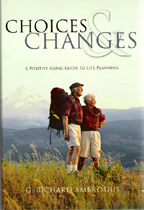 |
AMBROSIUS "When it comes to the medical needs of older adults, stereotypes have as much to do with behavior as do medical conditions." |
GET Choices & Changes at POWELL'S BOOKS
scroll on down for
AMBROSIUS' ARTICLES
AT THE SAGE COMPANION
|
|
AMBROSIUS
Positively
Aging
Betty White - Aging Role Model or Unintentional Ageist
Since her successful hosting of Saturday Night Live a couple years ago, Betty White has become a media darling and to some the ‘face of aging.’ Initially I, like many other professionals working in the field, was thrilled that the media was paying attention to older acting talent.
Sadly, it appears Betty White has become little more than a caricature
for aging stereotypes. I somewhat hesitate to share this -- I can hear
the responses now: Oh, lighten up…you have no sense of humor…we all need
to laugh at ourselves…get a grip and other trite condemnations.
When
it comes to battling ageism and negative aging stereotypes, the words
of Bobby Kennedy come to mind, “If not us, who? If not now, when?”
First
it was her television show “Off Their Rockers.” I got through about 10
minutes of the first show before I changed channels in disgust, knowing
the younger audiences probably loved it. Now we have a comedy show
devoted to perpetuating stereotypes. On LinkedIn, someone defended the
show by saying it finally portrayed older adults as ‘sexual beings’ and
that made it positive. Personally, I preferred the Dove commercials or
On Golden Pond as metaphors rather than the SNL ‘dusty muffin’ skit to
communicate later life sexuality.
The icing on the ageist cake is
the recent New Zealand Air ‘old school’ version of a flight safety
video featuring Betty and the members of “retirement” community, which
crammed every aging stereotype into the short production
(https://www.youtube.com/watch?v=O-5gjkh4r3g). No doubt much of the blame
goes to greedy agents and young creative directors who seem to enjoy
poking fun at older adults. This piece is aging as seen through young
eyes, which generally have a distorted view of the aging process.
Based
on available evidence, Betty White is just another loveable clown who
is a product of Hollywood and Madison Avenue. Hopefully, there is a role
model with the intestinal fortitude to step up to the plate and condemn
any and all ageism.
I for one will do all I can to support their efforts.
AMBROSIUS
~#~
Fireworks
& Rainbows
Fireworks and rainbows – what a wonderful metaphor for the aging of America
AMBROSIUS
We are just beginning a two decade period where adults over the age of 60 will dominate the marketplace for the first time in history.This reality is being viewed as both a coming calamity and an opportunity to finally reverse ageism and elevate the benefits of wisdom and experience.
AMBROSIUS
Of course Congress, government funded service agencies and the mainstream media tend to focus on the former. Congress has created and funded thousands of agencies and organizations to serve and ‘care for’ the ‘elderly,’ but few to tap their wisdom and empower them to solve problems. In many cases, the network of aging services providers have become unwitting ageists by promoting learned dependency.
When it comes to the medical needs of older adults, stereotypes have as much to do with behavior as do medical conditions.
In institutional settings, dependency is all too often unwittingly and yet flagrantly encouraged – and well-meant protectiveness gradually undermines autonomy and limits choices.When people blindly accept that older people walk more slowly, they end up walking more slowly as soon as there are environmental cues that make their advanced age salient. The reduced walking speed then becomes proof of both one’s age and validates the stereotype.
When the performance of an older person falls short on some measure developed in yesterday’s youth market, we blindly accept it as a failure of the individual rather than questioning the relevance of the measure.
Aging means change, but change does not mean decay and dependency.
As Ellen Langer observed in Mindfulness:
A decline in vigor is largely the result of our expecting to decline. Becoming mindful of your intention to live an active, purposeful life can dramatically improve motor abilities, strength, agility and mental responses. One of the insidious aspects of ageism is that it can operate without conscious awareness, control or intention to harm.
AMBROSIUS
On the other hand, older adults with a positive image of aging tend to live an average or 7.6 years longer; and yet we seldom hear about this view of aging. It is time for a revolutionary style movement wherein older adults exert both their economic and political power to demand an end to ageism and paternalism. It is time to demand that those in power consider the aged as partners as we reinvent the programs and services created to serve them.
It is time to demand accountability, expose misfeasance and reward those empowering older adults.
Those leading this revolution will most likely be mission-driven not-for-profit providers in partnership with courageous and creative business partners and leaders dedicated to positive aging.
Leaders more interested in making a difference; than making a quick buck. By mindfully pursuing positive aging, later life may become viewed as a time of growth rather than decline. Celebrating positive aging will give rise to empowered, community cultures celebrating the uniqueness and worth of each individual.
Only then will we turn the perceived fireworks to rainbows promising better, more empowered tomorrows for all older adults.
AMBROSIUS
##
Cool or Effective?
The Big Print Font Difference
Recently, an international aging association sponsored a competition for ageless/positive aging approaches. I had the honor of judging marketing materials for that competition. In all truth, I could not have been more disappointed with the entries targeting middle aged and older adults, despite the fact that, from a simple design standpoint, there were many exceptional examples of positive aging graphics, empowering programming and sound branding and positioning.
So, isn’t that what advertising is all about?
Not entirely. One must remember the importance and impact of mechanics. Many entries had used enamel paper stock which increases glare. Some contained font sizes less than 12 point. Any number over-used stereotypical references such as “senior” and “retirement”. Some had type laid over photos. And here is a big difference in the area of print media— almost all submissions were printed using sans serif fonts — blunt-ended fonts like the ones you are seeing here –but without the little ends of strokes on the characters.
Currently, graphic design, journalism, and marketing courses teach the same principles that have been taught for three decades which were focused to attract adults between age 18 and 39 – those who then dominated the consumer market. Things have changed since then, and the “boomer generation” is now the influencing force. Yet, the agencies that created the materials I was asked to judge seemed to be stuck in the “youth culture”— where the Internet, tablets, smartphones, Kindles, Facebook, etc. and the reading brain can quickly read and process information.
Thus, I was confronted by sans serif fonts such as Arial, Calibri or Tahoma.
These fonts, at least in print media, simply do not work for of mature adults who grew up reading newspapers, magazines and books printed with serif fonts.
In his 1986 book, Cashvertising, Drew Eric Whitman cited a 1986 study of fonts used in print materials and found only 12 percent of participants effectively comprehended a paragraph set in sans-serif type versus 67% who were given a version set in serif typeface. When testing two serifs (Garamond and Times New Roman) and one sans serif, Helvetica, serif fonts trumped again. In this study, 66% comprehended Garrmond (the font used in this article), 31.5% comprehended Times New Roman compared to only 12.5% for Helvetica.
I have spent the past 35 years studying effective strategies for reaching older markets, conducted hundreds of seminars and written communications standards and print guideline for effective communications for a variety of organizations. When shared, graphic designers and young creative ignore the research and defend their choice of font with statements like "other research has found the difference insignificant." Or worse, they say, “I am the trained/educated/experienced marketing professional, and you should listen to me.”
They get away with it
because most organizations have not been exposed to or taken the time to
discover what should be common knowledge for anyone serving older adults. If an
agency brings a mock-up with sans serif type, you should conclude that they do
not know enough about “Baby Boomers” and older consumers to be effective. My
recommendation: Find a new agency.
The most common defense is
that, “If it is so bad, why is sans serif the dominant font online?”
Again, they are demonstrating a lack of knowledge. The sans serif font was adopted for computer because computers lacked sufficient DPI (the density of illuminated points on a computer screen) to create serifs and the early dot matrix printers could not print them. Thanks to innovations introduced to meet the demands of a font-obsessed Steve Jobs at Apple, both computing and printing were revolutionized.
We all need to realize the brain is involved in deciding what to read and what to ignore. Most of that information-processing occurs at a preconscious level. So, what the reader's mind is accustomed to seeing and has accepted over a lifetime, is what that mind prefers.
In the case of the “older mind” serif fonts such as Times New Roman, Garamond or Georgia are favored.
Today's youth read using tablets not books. They get their news from the web, not newspapers. And many have difficulty creating a coherent sentence—no doubt partially due to the influence of texts and tweets. Twenty or thirty years from now, a cognitive shift may lead to a preference to sans serif fonts, but that shift has not occurred yet—not, at least, for today's older market.
Resources:
· The National Institute on Aging: http://www.nia.nih.gov/health/publication/making-your-printed-health-materials-senior-friendly.
· International Council on Active Aging’s Guidelines for Effective Communications: http://www.icaa.cc/business/whitepapers/communicationguidelines.pdf
· The Art of the Positive: http://s404764450.initial-website.com/articles-presentations/the-art-of-the-positive-booklet/
AMBROSIUS
Premature Aging is Mind Over Matter
If you don’t mind; it don’t matter.”
During my formative years, it was generally accepted that as we aged memory loss and “senility” was just a part of the process. Scientists supported that there was little if anything we could do to counter the losses that come with age. Happily, scientists were wrong. There may even be truth in the old adage, “Aging is simply mind over matter. If you don’t mind; it don’t matter.”
Author Don Joseph Goewey’s article, “Neuroplastic Fantastic: The Power of the Mind to Change the Brain,” examined this monumental change in paradigms (February 2012). “Breakthroughs in research have now proved that the brain responds to the mind. Mental practice can take a small village of high level neurons and build it into a humming metropolis, providing you with the power to produce optimal results in whatever you pursue.” Science now supports what many of us have long known intuitively – how we feel about our own aging can have an impact, positively or negatively, on how we physically age.
In her book, Mindfulness, Dr. Ellen Langer pointed out that we first use words to create categories (seniors, retirees, elderly) and then distinguish between them (frail, unproductive, hard-of-hearing), which ultimately shapes our world view. As aging stereotypes were ingrained by the media, our population mindlessly accepted them as fact. Until the mind challenges what the brain has been programmed to believe, millions will continue to suffer from pre-mature aging. We need our paradigms to make sense of the world around us; but if we do not continually question our views we can become trapped or constrained by them.
With the best of intentions, we have replaced purpose with pills; productive lives with early retirement packages; personal significance with shallow volunteer opportunities; and meaningful involvement with mindless “senior” activities. Has our mindless acceptance of “retirement” as a disengaged life stage one of the root causes of rising healthcare costs, the growing incidence of diabetes, depression, and the fear that Alzheimer’s disease will be a part of everyone’s future? To mindlessly accept aging as a time of decline and loss can become a self-fulfilling prophecy.
The study of gerontology began with what was believed to be a positive goal – to understand the aging process and the problems of aging people. Fortunately, that is beginning to change with a focus on successful or positive aging. We all need to put our own minds to work on rethinking our own aging and view life’s second half as a time of renewal and meaning rather than a time to retreat from purposeful living. To continue the focus on decline perpetuates the myth that aging naturally leads to all kinds of health problems.
To view aging negatively not only impacts our self image but can literally affect our health – “Becoming mindless about our abilities to age successfully too often results in wasted potential, frailty and premature institutionalization and even death.” (Langer, 1989)
AMBROSIUS
##
Preventing Self Inflicted Memory Loss
For years, I have been speaking and writing about the negative impact of aging stereotypes and the damage they do if they become self-fulfilling prophecies. In other words, if you believe old people all lose their memories, become less productive and dependent, you could be condemning yourself to that future. That’s correct! Memory loss, could to some degree, be self-inflicted.
The good news is that recent research has finally documented that positive stereotype reinforcement may be just as powerful as negative stereotypes. In a study published in the May 2013 issue of the Journal of Personality and Social Psychology, Indiana University psychologists found that…
The study shows that merely reminding people that they are members of a stigmatized group (in this case, older Americans) reliably dampens their performance. Similar people not reminded of their status did significantly better on the tests given for the study. In this case, that means that the aged are likely to have better-functioning memories when they are told, for instance, that older people "have more experience" or "have seen it all before….
AMBROSIUS
The power of stereotype is so strong that it can overwhelm many
of our other traits, which means that what you learned in kindergarten is true:
you're only as good as you expect to be.
While current ‘facts’ indicate that as you age, you will begin to lose your capacity for working memory, just as you will lose muscle mass, eye strength and balance. However, recent research also documents that much of this decline can be minimized by adopting a more prevention oriented lifestyle that includes diet and fitness for the mind and body.
How you “feel” about getting old may have a greater impact on your health and well-being than having low blood pressure or high cholesterol according to a group of Yale University researchers led by psychologist Becca Levy, PhD.
AMBROSIUS
In the next segment of THE BOOMER EFFECT SERIES,
you can continue to investigate AGEISM and discover some unexpected
but interesting perspectives on that subject.
|
AMBROSIUS The effect of more positive self-perceptions of aging on survival is greater than the physiological measures of low systolic blood pressure and cholesterol, each of which is associated with a longer lifespan of four years or less… It is also greater than the independent contributions of lower body mass index, no history of smoking, and a tendency to exercise, each of these factors has been found to contribute between one and three years of added life. (Reuters Limited, National Institute on Aging Study, 2003) |
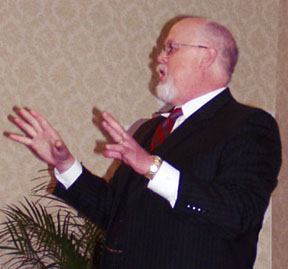
|
AMBROSIUS
We now have valid research documenting what most of those subscribing to positive/successful/active aging already knew, “People can be persuaded to believe either positive or negative stereotypes, and it can have a real impact on their performance in life.”
To paraphrase the author of the research, you can apply this to your own older relatives and friends every day. Never miss an opportunity when someone says they had a ‘senior moment’ to point out that he/she's always the one who remembers the grandkids' birthdays or who recalls all the measurements in family recipes.
Maybe little compliments will help them [all of us] battle the years of negative stereotyping to which they have been [and continue to be] subjected.
AMBROSIUS
##
Positive Aging Website- Events
##
AMBROSIUS
AMBROSIUS
Hugh Downs on Rethinking Aging
In January of this year, I had the pleasure of spending a couple of hours with Hugh Downs, along with 35 fellow members of The Society. The Society is a 20 year old think tank group of multidisciplinary aging professional that meets twice a year. One of our members had served as a consultant to Downs when he anchored Over Easy, the first Prime Time TV show devoted to aging. The 91 year old media professional was invited to share his thoughts on aging with the group in Mesa, Arizona near his home, which was a WOW moment for all.
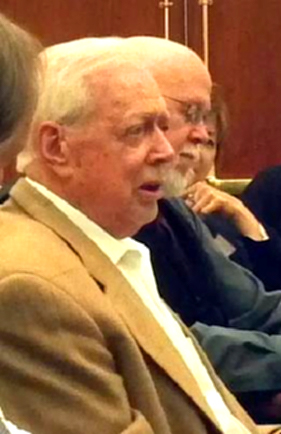 |
“There is wisdom and insight that comes with accumulated life.” This was said in a dialogue totally devoid of ego. In fact, he observed, “If Joe Smith wants to bask in the amber glow of ‘Joe Smithness’ forever, he will die of boredom.” To Downs, every day is different and he basks in the possibilities, “As you get older there are horizons that shrink and horizons that stay the same, and, unquestionably, horizons that expand as one uses the mind.” |
AMBROSIUS
We were not listening to a celebrity so much as an elder willing to share his life experience. When asked about his experience with Over Easy, he stated, “I never knew then how much I would know about aging…The human spirit has an amazing capacity for finding silver linings.
Stephen Hawking, commenting on the limitations of his paralysis, said, ‘I’m able to spend every waking moment thinking about theoretical physics!’” In other words, you can choose to focus on your problems or focus on the positive and how to do incredible things with the talents you have regardless of the barriers you encounter. In support of this observation, research indicates that those choosing the positive path live an average of 7.6 years longer than pessimists.
Downs is now entering his 10th decade and celebrated his 90th birthday entertaining his great grandchildren doing aerial stunts in his glider. When asked what an average day was like, he responded, “There is no average day for me.” What a great way to approach what has regrettably come to be known as retirement.
Maybe we can all take away the lesson that life is not about what happens to you but what you do with what happens to you and around you.
If there was an insightful take away message, it was in relation to the media’s negative portrayal of age and ageism to which he observed, “It is so awful to be prejudiced against a group that you will become a part of.”
___________________________________________________________________________’
Hugh Malcolm Downs (born February 14, 1921) is a long-time American broadcaster, television host, news anchor, TV producer, author, game show host, and music composer. He is perhaps best known for his role as co-host of the NBC News program Today from 1962 to 1971, and anchor of the ABC News magazine 20/20 from 1978 to 1999. In addition, he served as announcer/sidekick for Tonight Starring Jack Paar, host of the PBS talk show Over Easy, the first Prime Time program on Aging.
AMBROSIUS
ONWARD to investigate AGEISM
and some interesting perspectives on that subject
THANK YOU FOR SHARING ON BEING SAGE
follow on Twitter | friend on Facebook |follow on Pinterest |forward to a friend
Collect Sage Companion Practical Arts eBooklets on Kindle
SITE SEARCH
HOME ABOUT US DISCLOSURE SPONSORS DONATE SITEMAP
Disclaimer: The nutritional and health information provided on this site is for informational and educational purposes only. It is not intended to be used as a substitute for professional advice of any kind. This information is not intended to diagnose, treat, prevent or cure any illness. Your use of this website indicates your understanding and agreement with these terms.
R E T U R N T O T H E F R O N T P A G E
aging-in-place, age in place



